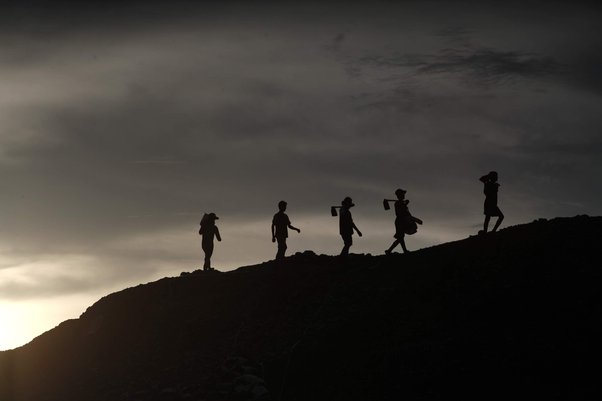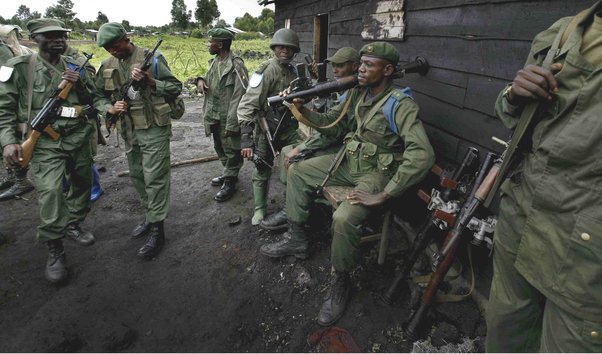The Responsible Jewellery Council’s new standard requiring supply chain due diligence by all its members is a step forward for responsible sourcing in the jewellery industry, but significant gaps remain.
Our open letter to Responsible Jewellery Council.
Dear Ms. Van der Veken,
The undersigned non-governmental organizations and trade unions working to protect human rights and promote responsible sourcing practices in minerals supply chains have followed the review of the new Code of Practices with great interest. Some of us also provided detailed input on the draft Code in June 2018. With more than 1,100 members across the jewelry supply chain, including mining companies, jewelry retailers, refiners, manufacturers and others, the Responsible Jewellery Council is in a unique position to support companies in adopting stronger responsible sourcing practices in the industry.
We are writing to provide feedback on the final version of the Code, published on April 24, 2019, its planned implementation, and provide recommendations regarding company certification under the new Code.
The New Code of Practices
We welcome the significant improvements in the 2019 Code of Practices (COP), compared to the previous 2013 version. Key among them:
- The explicit recognition of the OECD Due Diligence Guidance for Responsible Supply Chains of Minerals from Conflict-Affected and High-Risk Areas (OECD Minerals Guidance), the leading international standard on sourcing in the minerals sector, including the requirement that all members will implement its five-step framework. Importantly, the Code makes clear that the OECD Minerals Guidance applies to all members in the gold, silver, PGM, diamonds, and colored gemstones supply chains without exception, including companies in the diamond supply chain irrespective of their efforts under the Kimberley Process and System of Warranties. We also welcome the new Guidance manual’s detailed explanations regarding implementation of the OECD Due Diligence Guidance.
- New provisions requiring members to report publicly about their practices relevant to the Code of Practices, and to make their Codes of Conduct public. These provisions strengthen transparency and address weaknesses in the previous Code of Practices, which only required companies to report to stakeholders.
- We also welcome the call for adherence to the Minamata Convention on Mercury, an important standard to help protect miners and mining communities from the harmful effects of mercury.
- While these measures make the new Code of Practices stronger, we are concerned about some significant remaining gaps. These include:
- Provisions on indigenous people’s rights that fall short of international standards. Specifically, the Code of Practices states that members should “work to obtain” (rather than “obtain”) free, prior and informed consent of affected indigenous peoples. This language waters down the clear requirements of the UN Declaration on the Rights of Indigenous Peoples.
- The 2019 Code of Practices does not include reference to several key international human rights instruments, notably fundamental ILO conventions on forced labor (No. 105), freedom of association (No. 87) and collective bargaining (no. 98, and non- discrimination (No. 100 and 111); and the UN Basic Principles and Guidelines on Development-Based Evictions and Displacement. Although several other fundamental ILO conventions (e.g. 29, 138, 182) are referenced, we do not believe this is sufficient.
- Provisions on waste, emissions, and tailings that remain too vague and unspecific to provide a reasonable degree of assurance. In June 2018, we recommended that the Code adopt the relevant requirements adopted by the Initiative for Responsible Mining Assurance (IRMA) for industrial-scale mining on Water Quality and Quantity, Mine Waste Management, Air Quality, Noise, Greenhouse Gas Emissions, Protected Areas, Biodiversity, Cyanide, Mercury, Environmental and Social Impact Assessment and Reclamation and Closure. We continue to believe these are useful and relevant.
- Inconsistencies regarding public reporting requirements. In particular, while provision 3.1 states that members shall communicate publicly regarding their businesses practices regarding the Code of Practices, and 7.2 states that members will communicate their supply chain policies publicly, provision 6.1 (d) states that members shall only communicate with stakeholders about their human rights due diligence efforts. This risks confusing the critical requirement for public reporting, falling short of the requirements of Step 5 of the OECD Due Diligence Guidance, which calls for public reporting on companies’ supply chain due diligence policies and practices.
We encourage you to clarify and address these and other possible outstanding concerns during your review of the Code during its pilot phase.
Implementation of the new Code
We understand that the new Code will require a phase-in period, but are concerned that as currently envisioned, some RJC members will not be required to be in full compliance with the new Code until 2024. The current phase-in plan, outlined in the FAQ, states that between April 2020 and 2021, companies will not be assessed by auditors for their conformance with Steps 3 and 4 of the OECD Minerals Guidance. Step 3 requires companies to design and implement strategies to respond to human rights risks identified, and Step 4 requires companies to carry out a third-party audit for supply-chain human rights due diligence. Your May 24, 2019 letter also clarified that diamond and colored gemstone companies will not be fully assessed for conformance with human rights due diligence requirements until 2021. Because certification can be granted for up to three years, this means that some members may not be fully assessed against the new Code of Practices, including a strategy to respond to identified human rights risks, until 2024, a full five years from now. We find that deeply problematic.
According to the FAQ, between April 2021 and April 2022, the Code of Practices and its audit approach will be evaluated and potentially revised, along with other documents. No information has been provided regarding how revisions may be made. We are concerned that this may result in weakening of the standard. We do not believe any revisions should be made apart from a full, formal review of the Code, including all relevant stakeholders.
On a procedural level, we also are concerned that that the decision to create a separate process for companies in the diamond and gemstone supply chain was taken behind closed doors, not in a transparent manner, and without giving civil society groups the option of providing comments.
Certification and Audits
Despite the significant improvements in the new Code of Practices, we continue to believe that the standard’s provisions around auditing and certification could undermine its goals and allow member companies to pursue irresponsible business practices. In particular, members are given two years to comply with the standard after joining the RJC, but they benefit from the reputation of the RJC in the interim. Companies are not required to make the audit reports or summaries publicly available, nor does the RJC disclose information on the certification process and decision. Therefore, the certification process remains opaque.
Going forward, we encourage the RJC to reform its auditing and certification process to make it more substantive and transparent. Specifically, we recommend that:
- The RJC implements all recommendations made by the OECD Alignment Assessment including recommendations relating to the strengthening of audit program requirements and competency of auditors.
- Members be required to make audit summaries public, including information on all facilities visited, areas of noncompliance, a description of any identified risks, and the specific measures taken to assess and mitigate risks.
- Members should be required to reach full certification against the Code of Practices before they reference RJC membership in their communications, including reports, website, or other published materials.
- All members coming up for certification from April 2020 be audited against the new Code, including the full five-step human rights due diligence framework.
We would be happy to discuss these issues with you further and look forward to continuing to work with the RJC and its members to meet their commitment to integrity and sustainability in the jewelry supply chain.
Signed:
Advocating Rights in South Asia (ARISA)
Anti-Corruption Trust of Southern Africa
Child Labor Coalition
Ecumenical Institute for Labor Education and Research (EILER)
Enough Project
Global March Against Child Labor
Global Witness
Human Rights Watch
IMPACT
IndustriALL
Kimberley Process Civil Society Coalition – members include:
Center for Natural Resource Governance (CNRG)
Centre du Commerce International pour le Développement (CECIDE)
Centre National d'Appui au Développement et à la Participation Populaire (CENADE)
Green Advocates
Groupe d'Appui aux Exploitants des Ressources Naturelles (GAERN)
Groupe de Recherche et de Plaidoyer sur les Industries Extractives (GRPIE)
International Peace Information Services
Maluti Community Development Forum (MCDF)
Network Movement for Justice and Development (NMJD)
Réseau de Lutte contre la Faim (RELUFA)
Zimbabwe Environmental Lawyers Association (ZELA)
National Consumers League
Public Eye
Society for Threatened Peoples
Solidaridad
Swedwatch
Swiss Working Group Colombia
Dr. Greg Valerio MBE


